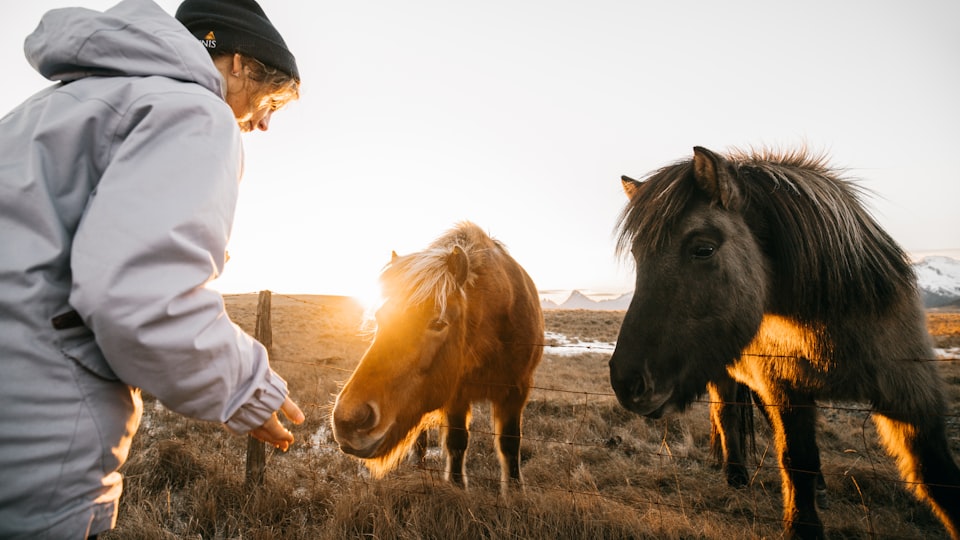The Icelandic horse is a symbol of national pride and joy for the Icelandic people. The first Viking horses came with immigrants between 860 and 935 CE, and our modern-day horses are descendants of them. Mini ice ages, Viking wars, earthquakes, and volcanic eruptions have all been witnessed by this horse. These beautiful animals may now be seen in Iceland’s meadows along the Ring Road, in the city, and on horse ranches.
Icelandic horses have grown in popularity and have become the primary motivation for many visitors to visit the country. They are a one-of-a-kind breed due to their inherent beauty, charm, strong personality, tiny height, and powerful body. You may expect to encounter these magnificent creatures when driving across Iceland, and you may wish to pose for a photo with them. You can also join a guided horseback riding trip or stay at a farm accommodation to get closer to them.

Iceland may be a challenging place to visit. Winters are long and dark, and the weather is severe. However, Icelandic horses are equally as strong as their homeland, and when you see them standing outside in the weather or snow, nothing appears to be able to derail them.
The stunning Icelandic horse is available in over 40 colors and 100 different patterns. In Icelandic, there are specific phrases for every one of these! During its lifetime, the horse’s color may even change.

The most frequent colors are brnn (brown) and rauur (red or chestnut), while litföróttur is the most uncommon. This loosely translates as “color travelers,” which is a great way to describe this unique color variety. A horse with this color will change colors several times a year, frequently resulting in a splattered in-between color.
Icelandic horses are not indigenous to Iceland; they were introduced by the Vikings over a thousand years ago. The horses have been living and reproducing without any genetic influence since that time. This makes them one of the world’s purest horse breeds, and let’s face it, it’s quite awesome to envision the ancestor of a horse you can see today standing next to a powerful Viking, isn’t it?

FUN FACTS
- Iceland has around 80,000 Icelandic horses.
- For over a thousand years, Icelandic horses have been bred in their natural state.
- In the winter, the Icelandic horse develops a lot of hair and becomes a full furball. They lose their hair in the summer and take on an entirely new appearance.
- One of its gaits is known as skei, which is Icelandic meaning spoon.
- A committee of Icelandic horse naming permits only specific names to be given to horses.
- There have been attempts in various countries to cross the Icelandic horse with other breeds, but the progeny are almost always non-fertile.
- Sleipnir, the horse of the Pagan God inn, had eight legs.




0 Comment